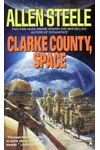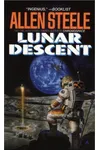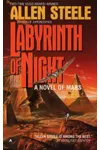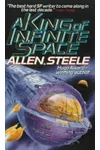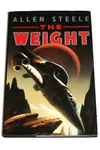Step into the gritty, starlit world of Allen M. Steele’s Near Space series, where blue-collar astronauts, orbital intrigue, and the dream of humanity’s cosmic future collide! This hard science fiction saga, set in a near-future universe of space stations and lunar bases, hooks you with its blend of technical realism and rebellious spirit. From surveillance conspiracies to lunar rebellions, Near Space is a thrilling ride for sci-fi fans craving a plausible peek at life beyond Earth.
Known for its vivid characters and thought-provoking themes, the series captures the messy, human side of space exploration. Whether you’re a fan of Robert Heinlein’s bold visions or just love a good underdog tale, Near Space delivers a universe that feels as real as it is captivating.
How Near Space Began
Allen M. Steele, a former journalist and lifelong space enthusiast, launched the Near Space series in 1989 with Orbital Decay. Inspired by his love for hard science fiction and real-world space exploration—he’s witnessed shuttle launches and flown NASA’s cockpit simulator—Steele wanted to tell stories about ordinary workers in extraordinary settings. His vision was to craft a future where space isn’t just for heroes but for roughneck “beamjacks” and “moondogs” fighting for independence. The result was a series that feels like a love letter to the gritty realism of Analog magazine, earning Steele a Locus Award for Best First Novel.
The Heart of Near Space
The Near Space series, also called Rude Astronauts, spans five core novels, each diving into the challenges of near-Earth colonization. Orbital Decay (1989) kicks things off aboard Olympus Station, where beamjacks uncover a surveillance conspiracy that sparks a revolution. Clarke County, Space (1990) shifts to an orbital colony grappling with corporate greed and an assassin’s threat, blending suspense with social commentary. Lunar Descent (1991) takes readers to a moon base where workers, fed up with Skycorp’s exploitation, stage a rebellion filled with humor and heart. A King of Infinite Space (1997) explores cryopreservation and slavery in a distant future, offering a standalone yet connected tale of redemption.
The series shines through its hard sci-fi roots, with plausible technology and detailed settings that make orbital habitats feel lived-in. Themes of independence, surveillance, and the clash between corporate power and human spirit run deep, grounded by Steele’s knack for blue-collar characters. From Popeye Hooker’s wry narration to the vivid chaos of lunar factories, the stories balance action, humor, and a cautionary look at humanity’s cosmic ambitions.
Why Near Space Resonates
Near Space stands out for its prescient take on space colonization, blending Orwellian warnings about surveillance with Heinleinesque tales of rebellion. Its influence lies in its grounded vision—space isn’t a utopia but a frontier where human flaws and dreams collide. Fans praise its relatable characters and realistic science, with Orbital Decay often hailed as a cult classic. Though less famous than Steele’s Coyote series, Near Space remains a gem for readers seeking smart, character-driven sci-fi that feels eerily relevant in today’s world of corporate overreach and tech debates.
- Publication Years: 1989–1997
- Number of Books: 5 core novels
- Awards: Orbital Decay won the Locus Award for Best First Novel
- Genre: Hard science fiction
Grab Orbital Decay and blast off into Near Space’s gritty, rebellious universe! Whether you’re dodging NSA spies or cheering for moondog rebels, this series is your ticket to a sci-fi adventure that’s as real as it gets.

